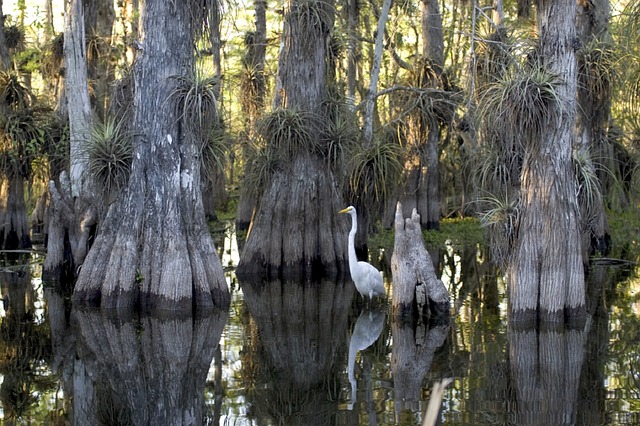Everglades National Park
Covering a staggering 1.5 million acres of preserved land in southern Florida, Everglades National Park is a stunning natural environment protecting the flora and fauna of Florida. Several endangered and rare species find their homes here among the varied ecosystems including the Florida panther, American crocodile, and the West Indian manatee.
A World Heritage site and protected under the Cartagena Treaty, the Everglades was formed to conserve and protect the land of southern Florida and the animals which call it home. Alongside the endangered species, you might find black bears, American alligators, caimans and boa constrictors, a variety of birds, and more. Flocks of flamingos may be seen in abundance throughout the park as are alligators who swim beneath the shallow waters and through marshes.
The Everglades is a unique environment for its strange combination of ecosystems. There are at least six separate ecosystems thriving simultaneously side by side including mangrove, pineland, sawgrass marshes, and the Florida Bay among others. The geology of the park is a delicate balance of imposing geology and hydrology, a combination of limestone structures and rising sea level. The raw beauty of these habitats is incredible, so be sure to bring a camera!
As the Everglades is so large, perhaps the best way to see the park is to go by canoe or kayak through the waters. Much of the park is inaccessible by foot so water-based transportation is recommended. To see wildlife, Nine Mile Pond trail and others in the Flamingo area are suggested as well as Anhinga Trail which provides great wildlife viewing opportunities for creatures such as turtles, herons, and alligators.
Hiking the interpretive trails, biking along Long Pine Key Nature Trail, birdwatching, and boating in the Gulf Coast are all excellent ways to experience the Everglades. Ranger led tours are available as well, just head over to Cypress Dome. Camping is also allowed in the designated campground areas. While you’re here, stop by the Ernest F. Coe Visitor Center Gallery to see artwork by local artists of all ages.



